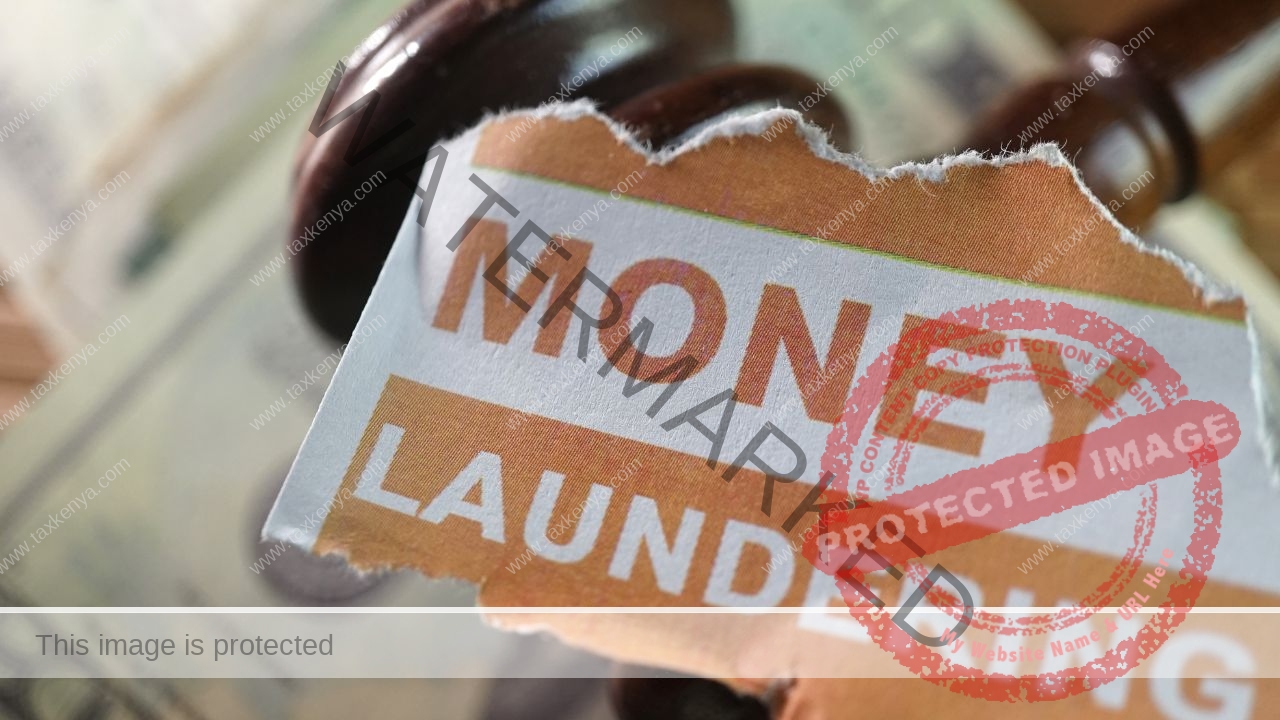Many of us have heard about money laundering. But what is money laundering? There are many definitions of the term money laundering.
However, the most commonly used definition is “the process of cleaning proceeds of crime to conceal the illegal origin and legitimize future use in the legal economy”.
But what are the proceeds of crime?
These are any economic advantages such as money directly or indirectly derived illegally or from engaging in illegal or criminal activities. Illegality is the keyword.
Therefore, the prime objective of money laundering is to conceal or hide the true ownership and the origin of the proceeds with the desire to maintain control and secrecy. This is achieved by changing proceeds from illegal to legal form using simple (at times complex), diverse but subtle and secret techniques.
It is important to note that money laundering happens within a country and internationally. Within the country, when people engage in illegal activities such as theft, bribery and corruption, they may engage in money laundering to clean the money.
Money laundering also occurs internationally when money is moved across countries from where it has been acquired illegally across international boundaries to countries where it can be cleaned, for example, piracy proceeds.
Origin of Money Laundering
Various texts reveal that money laundering is an activity as old as mankind. It may have been first used to enable merchants in the early years to conceal their riches from the King.
Later, it was used to conceal the proceeds of illegal gambling and such activities.
The activity was also picked by pirates who needed to sell their bounty without drawing the attention of authorities. Today, the activity is heavily used to conceal the proceeds of illegal activities such as corruption. Therefore, money laundering and illegal activities are two sides of the same coin and have existed for many years.
Money Laundering Process
Money laundering is not a one-step activity; it is a process. Globally, many steps are involved. However, all the steps can be consolidated into four major steps.
a. Sourcing of funds
The first step is the sourcing of funds. As earlier indicated, the funds are sourced illegally or from illegal activities such as corruption, bribery and fraud.
Other sources are organized crime, illegal drugs, human trafficking, environmental crimes, terrorism etc. Once the illegal funds are available, the process continues to the second step.
b. Placement
The second step is the placement of the illegal proceeds in the formal economy. For example, the proceeds are initially introduced into the legal economy in anonymous bank accounts. The proceeds are then converted into legal assets to make uncovering of the illegal proceeds arduous. This is the most impervious step in the cycle because it determines whether the process will succeed.
c. Layering
The third step is layering. This is done to increase strenuous to trace the source of the proceeds. Layering is done using multiple transactions to distance the proceeds from their origin. For example, there are multiple transfers of the proceeds in several bank accounts within the same bank, across several banks in the same country, or across international boundaries.
The process may also involve purchasing expensive tradable assets such as vehicles, artworks, real estate and cryptocurrencies. Global casino chains are also used for international gambling.
d. Integration
The fourth step is integration, where the laundered proceeds are returned to the owner. This will create a facade of legitimate wealth owned by the owner. Clean, legitimate proceeds will re-enter the mainstream economic environment. This can be done through casino wins, international and local directorship pay or donations to charitable or other local and international organizations where the owners earn hefty salaries.
Why is Money Laundering a Problem Today?
In “The Laundrymen, ” Jeffrey Robinson asserts that money laundering is the world’s third-largest business after the foreign exchange and oil industry. This assertion is supported by the International Monetary Fund (IMF), which estimates that the industry activities account for between two and five per cent of the world’s Gross Domestic Product (GDP).
Therefore, continuous focus on this industry is vital from the country, regional and global perspectives. Besides, this focus is necessitated by the rapidly changing global economy with innovations such as visual currencies (Bitcoin, Ethereum, Ripple etc.), offshore banking activities, and dark-net in the web (e.g. silk road), the global markets that enable the growth of the industry.
Effects of Money Laundering
Since money laundering and illegal activities go hand in hand, it negatively affects the very existence of the world as we know it today. Money laundering negatively affects all facets of the world, from politics, security, economy, religion, population etc.
Money laundering creates a global threat by fueling criminal enterprises, helping hide illegal proceeds and creating uneven ground for honest businesses. Illegal activities are a risk to financial systems and institutions, and they erode integrity and create reputation, credit, operational, and market risks etc.
Besides, the activities deter private and public investments, destroy local and international business competitions and impact country revenues. On the financial front, the activities perpetuate bribery and corruption, obstruct good governance, erode confidence and destabilize financial institutions in a country.
Further, illegal activities fuel terrorism by enabling the easy transfer of proceeds of crime and international crimes such as pirate activities. This creates insecurity in the specific countries involved, the region and globally.
Additionally, money laundering has been quoted variously as increasing poverty worldwide, especially in developing countries. The laundered proceeds are often denied by governments since no taxes are paid. This effectively means that the government will not have adequate resources to fund development in the country. This hinders poverty elimination efforts within the country.
Facilitators of Money Laundering
There are many players in the money laundering industry. Some individual players engage in illegal activities, such as politicians, business people, religious leaders, military personnel etc. Institutions such as local and international banks and other financial institutions also facilitate money laundering. Besides, brokerage firms in securities, commodities and forex trading are facilitators of money laundering. Further, global and local insurance companies and international money remitters are also involved.
Cash-intensive businesses (retailers), realtors, professionals such as lawyers and accountants, government officers and some governments are also facilitators in money laundering activities.
Incentives for Money Laundering
Locally and internationally, there are many incentives for money laundering. Some of the incentives are the availability of opportunities for money laundering activities, the availability of large sums of money in the cash economy and low confidence in the security of assets within a country. Other incentives include assets disclosure requirements within the country, political instability, possible regime change, risk of investigation for money laundering activities and prosecution.
Challenges of Money Laundering
Governments and organizations that work to eliminate money laundering face numerous challenges at country, regional and global levels. This means that no single country is currently faced with the challenges of money laundering.
Some of the challenges experienced worldwide are a lack of political goodwill at senior government levels and capacity building for investigating and prosecuting the culprits within the countries and globally.
Besides, implementing anti-money laundering laws in many countries is difficult because of challenges such as the requirements to know your client, which is difficult to implement and the fact that some economies are cash-based.
Other challenges are coordination among the country’s law enforcement agencies, financial intelligence units, regulators and judiciary. There are also global coordination challenges among international organizations that work on money laundering challenges.
Local, Regional and Global Actions Required
No single country can manage the problems created by money laundering. There is a need for increased efforts at regional and global levels. There are many actions that individual governments and organizations working towards minimizing money laundering across the world can take.
Some actions include the global implementation of strict anti-money laundering laws, the elimination of tax havens and increased international collaboration. Other actions include pressure on various countries and institutions to adopt international standards, involvement of the private sector to proactively monitor business relationships and creation of financial intelligence units in the private sector to report any suspicious transactions.
Also, there should be capacity-building in-country agencies involved in the fight against money laundering. Increased exchange of financial information at the global level will also assist in trying to solve some of the global challenges to money laundering.
Further, massive public awareness should be created of the effects of money laundering on the general public’s welfare and the whole country.
Conclusion
Money laundering negatively affects individual, country, regional and global levels. Countries, regions and the world should put more effort into countering money laundering activities that currently threaten the very existence of this world.
Email: taxkenya@gmail.com





